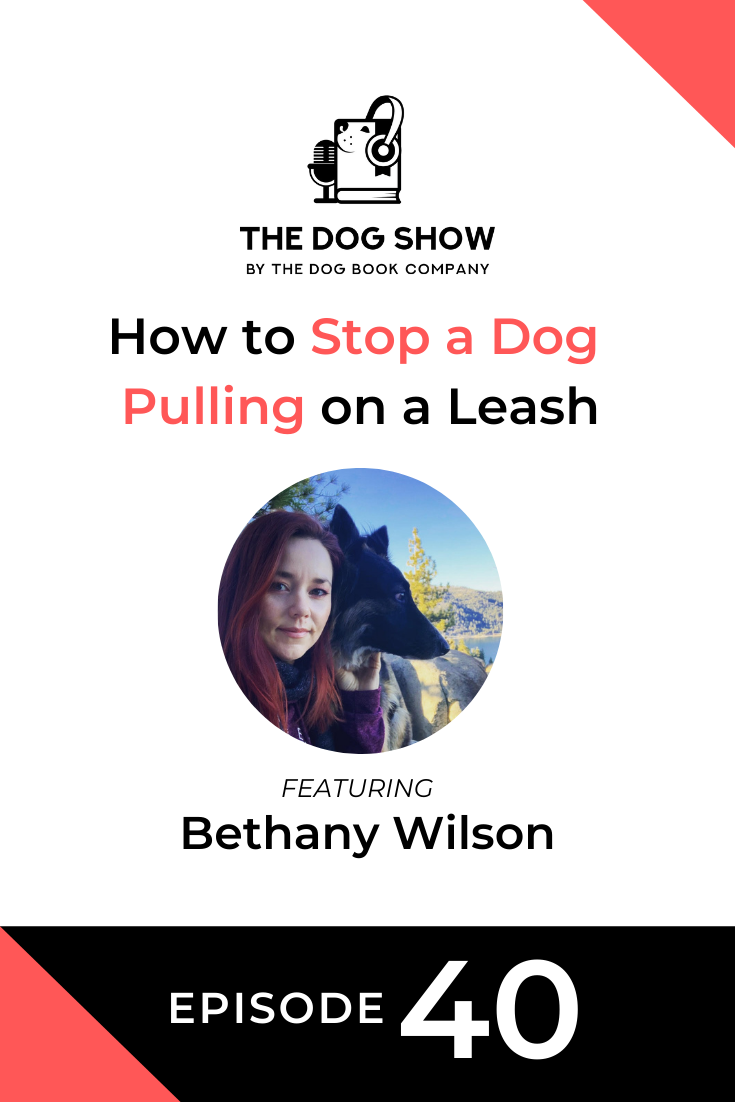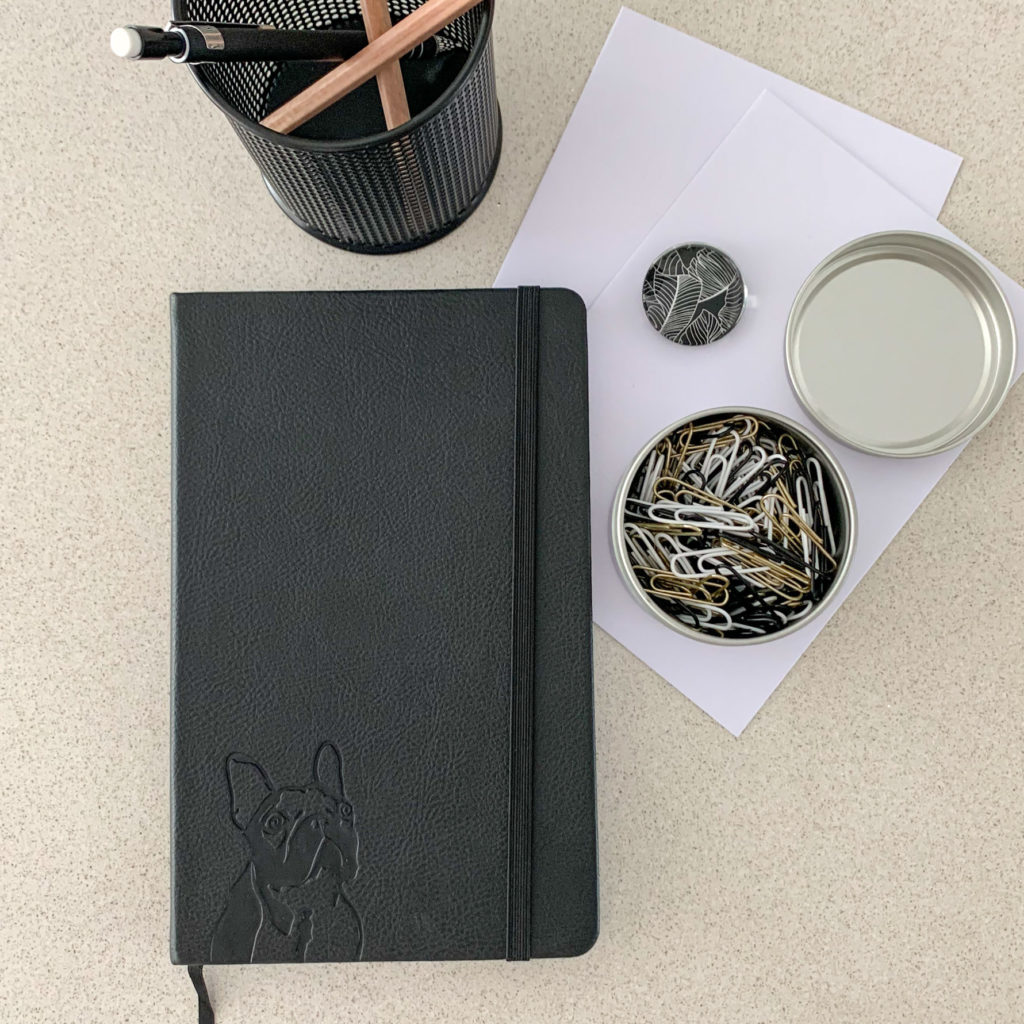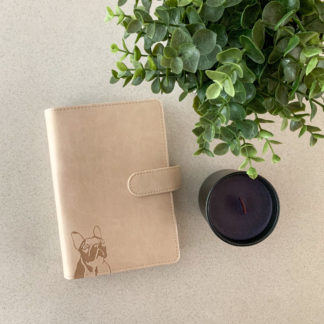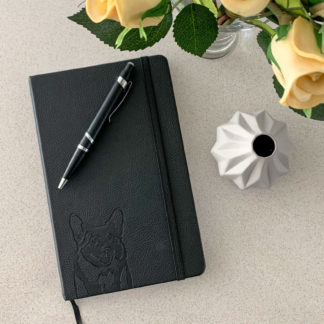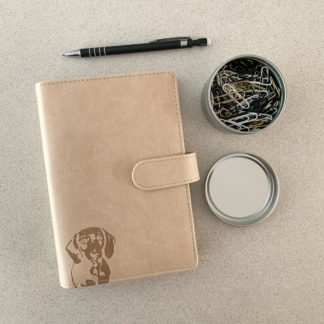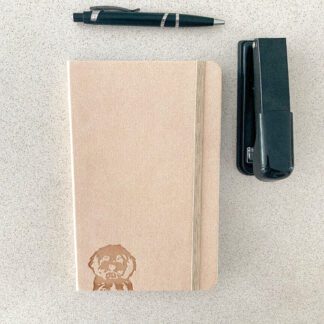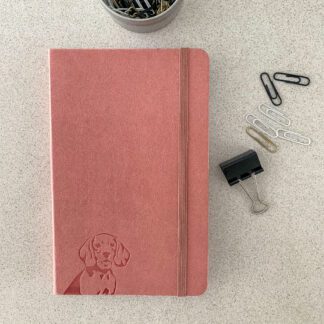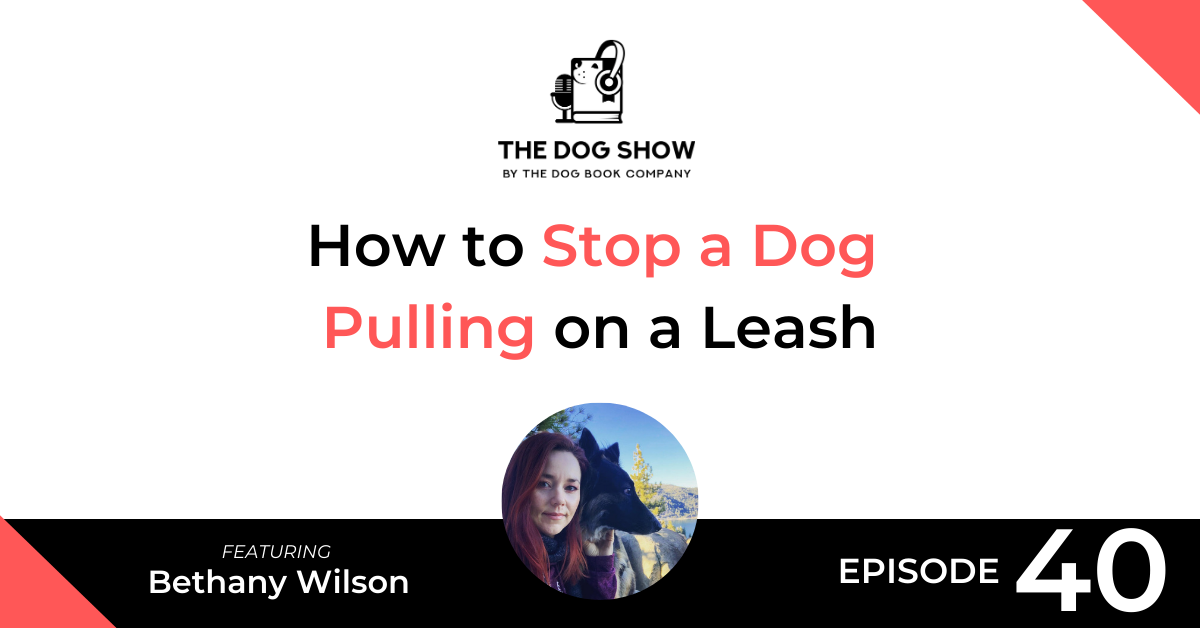
Do you wish you could stop your dog pulling on the leash?
In this episode of The Dog Show, featuring Bethany Wilson, we discuss why dogs pull on a leash, whether it’s bad to do so, and how you can stop your dog from pulling.
Bethany, who also appeared in Episode 19, is the Founder and head trainer of Ruff Beginnings Rehab, a full-service dog training facility based in Los Angeles, California. Ruff Beginnings provides owners with guidance, homework, schedules, and aftercare, as well as an expansive range of online training videos.
Find out more about Ruff Beginnings Rehab here:
Listen
Watch
Read
Will: This episode of “The Dog Show” features Bethany Wilson. Bethany is the founder and head trainer of Ruff Beginnings Rehab, a full-service dog training facility based in Los Angeles, California. Ruff Beginnings provides owners with guidance, homework, schedules, and aftercare as well as an expansive range of online training videos. In the interview, we’ll discuss why dogs pull on a leash, whether it’s bad to do so, and how you can stop your dog from pulling. Bethany, welcome to “The Dog Show” once again. It’s an absolute pleasure having you on.
Bethany: Thank you very much.
Will: Yeah. So, people that are familiar, you’ve been on the show before. Episode 19, we spoke all about trying to help dogs with anxiety, and that was a really popular episode, actually. That’s why I got back in touch with you. So, thanks very much for coming back. Today we’re going to talk a little bit about dogs and pulling. So, a lot of dogs, and I’ve experienced it myself, pull on the leash when they’re walking, and it can cause issues with training and I guess interacting with other dogs and other humans. So, can you tell me why a dog pulls on the leash?
Bethany: Yes. Okay. So, just so y’all know, like, he warned me beforehand, he’s like, “These are going to be shorter segments, and I know you like to talk a lot.” And I have, like, a whole disclaimer and all this stuff to go into dogs pulling on leash. But I will say that the vast majority of time, you don’t want it, at least in my personal experience. And dogs pull on leash because they can. I mean, at the end of the day, like, my only short answer is dogs pull because they can, they’re allowed to pull. And you have to look at it from their perspective, they don’t know what a leash means. It is the most unnatural thing for a dog to have a leash on. Their first language is body language and then we teach them English and then we strap a rope around them and expect them to know what to do with it. And they don’t, it doesn’t come natural to them at all.
You know what comes natural to them? Opposition reflex. Strap a harness on a dog and let them pull you a few times, and they’re like, “Oh, this comes really natural to me to feel, you know, that strap across the chest and actually push through that opposition.” Just like huskies or hunting dogs or, you know, they take officer canine dogs and they ramp them up, they rile them up by holding them back and then letting them go. So, that’s what comes naturally to them if anything is holding them back and letting them go. So, honestly, bottom line, though, I still just say dogs pull because they’re allowed, you know, basically.
Will: When you’re talking about pulling on a leash, are you’re referring to a dog, like, when you’re walking them, like, always pulling ahead or is it, kind of, when they see stimulation, and they dart towards that stimulation and pull?
Bethany: Both?
Will: Both. Yeah.
Bethany: Both. I’ll be honest, I’m mostly talking about…In my head, I was mostly talking about, you’re walking down the street and your dog’s pulling you. They’re pulling you forward, they’re pulling you to this side, they’re pulling you to this side, just wherever they want to go, that’s where they’re going.
Will: Would you say it’s a bad habit to let your dog be pulling on the leash when you’re walking?
Bethany: Yeah. Yeah, it’s a really bad habit. It can lead to a lot of issues, a lot of behavioral issues. Here’s what it doesn’t, so like, here’s my disclaimer is I have absolutely met more sensitive dogs. I have absolutely met dogs that they, kind of, leisurely stroll and they go over here and they sniff and you say, “Let’s go,” and they walk with you. And they go over here and they sniff, they see the neighbor, they’re excited for a second, “Hey, neighbor,” and then you say, “Let’s go,” and they follow you. And they might be ahead a little bit but they’re not dragging you. They’re not actually feeling that pressure and digging into it more, like, it’s not beating them up. So, there are definitely dogs that are more on the sensitive side or they’re more relaxed and lazy that they just don’t care, they’re not overly stimulated all the time, a lot of it is good genetics too. Those dogs, absolutely, they can do what they want when they want.
From my experience, a lot of it depends on the neighborhood. So, if you live in a neighborhood that’s crazy, crazy busy, maybe you live in an apartment that’s really active, barking dogs everywhere…I used to live in North Hollywood, in Los Angeles. I mean, the moment we walked outside, on this side and this side immediately is dogs running up and down right on the sidewalk. And I have the sidewalk, and then if I go out into the street, I’m on Quango, which is a busy busy street. So, I got nowhere to go, and that’s a lot of people’s situations. And so the dog is constantly overstimulated just all the time. And you can’t let them drag you through those moments because it’s just really bad psychologically for them. They don’t understand whether they’re coming or going.
So, a dog like that, and in an environment like that, I’m way more strict with versus even where I live now, it’s a calmer suburban neighborhood or if I was back on the farm, and I’m walking down the street, unless I’m practicing heel, which is, be right at my side, it’s a position just like sit or down, they could be on a 6 or 10-foot leash and stay with me and do a little bit of that. They’re not challenged at every turn, barking dog, sound of traffic, all this stuff. So, they’re just calmer in general because they’re not constantly overstimulated. So, I do think that it’s okay for your rules to depend on where you live and what your dog’s temperament is like. I think that that’s perfectly acceptable.
I will say that in the short-term, though, you want to be consistent with everything. Every dog learns the same thing in the same way, but then you can quickly wean off of that depending on what is comfortable for you and your dog. So, if someone says, “Well, I walk my dog, he walks in front of me, doesn’t really pull me that much. He’s a pretty good dog, he’s not reactive, there’s no major behavioral issues,” then fine, then don’t listen to me, then this information isn’t for you. Maybe something else will be, but this information isn’t for you. So, I think everybody’s really got to look at their expectations, you know, what they want.
But I will say this, so even…because I come across this a lot, living where I am. So, people might go on vacation somewhere, and they have this really relaxed dog that just meanders around, and it’s pretty soft and sensitive. But then they want to take that dog on vacation up to some cute little Danish Village in Solvang or something like that, and they won’t listen, they’re overstimulated. They’re not used to that environment, they’re pulling, they’re not listening anymore. Like, when you can’t only train, but in those moments, you have to be consistent at home when it’s easy in order to get that on your vacation or on your camping trip.
So, you really…just to be super clear, you’re looking at the dog and the dog’s temperament, are there any behavioral issues that you need to work on? Then you need to look at the type of environment that you live in, the level of overstimulation there is, and how your dog deals with that. Then you got to look at what are your expectations because it’s not fair to expect certain things out of your dog, but yet not practice them in other situations when it’s easy. So, for me, those are the three things that you’re mainly looking at when you’re deciding what’s acceptable behavior from my dog.
Will: Yeah, I think what I’m hearing is there’s lots of different levers going on here. It’s quite a complex topic, which might sound simple on face value. But also, every situation is different, and every owner is going to have different interpretations of what pulling is or whether it’s bad or whether it results in bad behavior.
Bethany: It’s true.
Will: So, it does come down to the owner’s expectations as you put it.
Bethany: Yeah. And let me be clear about that. So, I mentioned before heel is a command. Well, heel means right next to my thigh, basically. When my leg steps out in front, it takes away the dog’s peripheral. They shouldn’t be so far ahead of me that they have full swivel of their head, if I’m working on anxiety or listening skills or anything like that, so it’s next to me or a little behind me is okay. Now, I’ll even get on lax that aspect of it with dogs that are really, really solid. They don’t push boundaries, they’re not reactive, but I still want them to learn a loose leash heel. So, I might allow them to be a little…like, their neck in front of my leg, but it’s still a loose leash heel be right next to me. So, those are two distinctions we make. We call it the obedience heel versus the behavioral heel.
The behavioral heel for mindset is no peripheral, so the block of that dog’s head has to be even with my thigh, or a little bit behind, because if it’s peeking out like this, they have all this room to look around and get amped up and overstimulated and feel like they can make decisions. And if I’m trying to work on the mindset, calm the dog down, even if it’s not reactivity, even if it’s nervousness or anxiety, I want that dog in check and follow me, follow my leg, follow my lead. With a really relaxed dog or just a happy-go-lucky dog that can fluctuate a little bit. So, that’s, like, an obedience heel is a little bit more lenient versus that behavioral heel is never in front of my leg. So, there’s those two distinctions.
But even heel on its own, it’s not just loose leash walk, it means follow me. I’m in charge. And I don’t mean that just in a mean, dominant way. It means when you’re about to react to that dog over there, no, you don’t, cut it, like, “No, I’m in charge.” When you’re fearful of the Halloween decorations that just went up, “Don’t worry about them, I got your back. I’m in charge.” So, it’s like a protection and a trust thing too, it’s not just, “Don’t behave badly, I’m in charge.” It’s way deeper than that. It’s way deeper than that. If I’m the leader, and I’m in control of the walk, then you don’t have to worry about anything, and you can be a calmer dog.
I’ll give you an example real quick. We got this little pomeranian, oh, bless her heart, she’s so cute. She’s so nervous of traffic, and even with the board and train, when we’re on a really busy street, and the traffic is going this way, and we’re walking this way, she blinks when they go fast, she’s so afraid that it’s going to hit her. She still does that. But what she doesn’t do anymore is flee for her life. So, she would bolt every time she saw a car, she would bolt and she would try to hug as far away as possible and push against the leash and just freeze up. And so she would either bolt or she would refuse to move. Like, the owners had tried sit for food. So, she’s like, “I’ll just sit,” but then that means she’s never working through anything. And so her, on the positive side, blinks when traffic goes by. So, fear doesn’t magically go away but she does trust us. She’s like, “Okay, they keep practicing leadership all the time 24/7 consistently, I think they won’t let the car hit me.” And so they need someone to follow, they need someone to lead them and guide them. And that’s why I say, the dog itself, the genetics really does play a big part of it.
And then you’ve got, on the opposite side of that, it’s not always fear. Sometimes it’s just crazy, pushy, happy behavior from some out of control, excited pitty they just wants to say hi to everything. And you got to keep that in check because you can’t have them dragging you all over the place. So, it’s different reasons. But the heel is much more than just an obedience command, it’s a relationship, it’s a conversation. Every time you walk out that door, you’re having a conversation with your dog about your role in the pack. That’s what you’re doing. That doesn’t mean I can’t be lenient and let my dogs sniff for half a block because they’re doing good, and they’re pretty easygoing. But when I say heel, you better get back here and put yourself back into heel. And if you don’t, then that tells me I’ve been a little bit too lax, and we need to tighten up on structure a bit. I say that because it’s after the holidays right now, and my dogs always get too lax after the holidays. And I always tighten back up on structure.
But anyway, I just want that to be so clear. It’s not about an obedience command. You can teach it with a slip leash, with an e-collar, with a prong collar, you can use whatever tool you want. And for those of you out there, I use training tools, in case it’s the first time you’re hearing me, I use training tools, absolutely. But I also encourage, depending on the severity of the issues with the dog, if someone’s brand new to training, I encourage you to just go get a slip leash and lookup body language techniques and just work on turns in your yard, slip leash pressure on and off, move when I move, stop when I stop. Just get in tune with your dog in their first language, which is body language, and then you’re just layering the leash understanding on top of that before you try to go for a walk and control them because that’s what all of this is, it’s relationship. That’s what it all boils down to much deeper than don’t pull on a walk. It’s my conversation I’m having with my dog every single day. So, anyway, not to romanticize it, but that’s how I look at it.
Will: I like how you differentiate between obedience and behavioral. For me, the way I interpreted that was almost like the obedience side of it is, like, a preventative thing. Whereas behavioral is more if you feel like there’s already an issue there, you’re trying to solve that. Would that be a good…?
Bethany: Yeah, that’s a good point. Yeah, I like that, it’s preventative, yeah. In my opinion, you need to teach your dog to walk next to you on a loose leash. Even if they do good, I would never advise anybody to just let your dog do whatever on a walk because they’re softer. But people are doing that, and they’re happy, and I’m not going to mess with that. But in my personal opinion, yes, as a preventative, I want my dog to know the command heel. And that means come next to me on a loose leash, you know, relatively next to me, not too far out ahead, not too far behind. And that’s just my basic conversation with them if we’re walking together. I’ll lead you through some tough moments, you need to pay attention to me, but we’re walking together. And then a behavioral heel is 110% of the time, you will always follow me. You don’t make decisions anymore, you will always follow me because I’m trying to help them with something, so.
Will: Is there an optimal time in a dog’s life where teaching heel is going to be easier or…?
Bethany: Well, so with puppies, what we do is a lot of come for food, and we pair it with body language. So, I’ll take a step back, come food, come food, take a step back, come food. And then I kind of switch that to let’s go, we’re just walking around my house. So, I just walk for a little ways, and the puppy is following me expecting food and I turn, good, food, I turn again, good, food. So, I’m just teaching the puppy to follow my feet. That’s what I’m doing, basically. Then you have to teach a puppy, which you can do 10, 12 weeks old, leash pressure, but you’re not going out on a walk. What you’re doing is you’re teaching them something to target like place, or they’ve already learned sit or place, which is a go to your bed, lay down. But they’re just going to the bed.
And so let’s say they’re really great at that, they’re really good at sit, and they’re really good at place with no leash and food guidance and, like, some hand motions, body language, then you layer leash pressure onto that. So, I add a little tension on the leash, and they’re like, “Oh, I don’t know what to do with this. This is very foreign, I don’t like it.” Food, place, and then they work through the tension, and you pair those things together to teach them how to give into leash pressure. It’s the same for come. So, if my puppy is sitting on place, and they’re sitting and waiting for their food, I’ll actually apply a little bit of leash pressure first, it’s really gentle, it’s just guidance, and then I say, “Come,” because they don’t know what to do with it. So, they’re like, “What do I do? What do I do with this pressure around my neck or on a harness,” depending on the size of the puppy. Sometimes small puppies will do harnesses rather than slip leashes. But they’ll just be like, “I don’t know what to do with this.”
I give them the information, and I take that step back with the food that I’ve done 200 times with no leash, and it kicks in that muscle memory for them. I’m not saying it’s always that simple, there’s always nuanced stuff in there. But that’s basically what you’re doing. And then you layer it to turning, and then you can start marking the position next to your foot with food. But this takes some serious skill, where you have a leash, and you’re walking and you’re rewarding for heel while you’re walking. I mean, it’s tough. It’s tough, I’m not gonna lie. But we’re always prepping all of that stuff with our puppies from day one, like, day one puppy comes home, these are your two things come and crate. And with come, there’s body language to it, there’s movement to it, so they learn to follow movement, and then they learn crate as well.
Then when the puppy gets a little bit older, it depends on the breed, it depends on the size, on the maturity of the puppy, but they really won’t get good at heel until they’re mature enough to be able to have consequences for bad decisions. You know what I mean? And so our generalization is six months, but a lot of larger breed dogs are just really driven dogs. So, five months, I’ll go ahead and put training tools on them. And, of course, we teach it low-level consideration, food, leash guidance. But then at some point, that bush that you will not stop sniffing without permission, correction, “Oh, oh, oh, what do I do with that?” Well, we just keep moving. And then I go back to consideration, and food, and sit, and food. And then I look for another moment for accountability, and I see how they handle that. Are they mature enough to learn from that, basically?
So, those are, kind of, the phases that you go through if you’re lucky enough to get a puppy really young and work them through that. But I’ll be honest, like a dog that I get in from a shelter that’s 3 years old, I work them a little bit in the house and in the backyard and on day two or three, we go on a walk and I go ahead and hold them accountable for any bad decisions, like, reactivity or trying to drag me down. We actually have a pitty right now, she’s so used to pulling and she’s already on tools. But she pulls through them, she doesn’t care. She’ll pull my shoulder out of socket just like she does her owners. Even with the prep work in the house, she’s just outside and overstimulated. So, right away, it was like, I gave slack in the leash, I gave her a good tug, we call it a check or a pop, and then I was just like, “Let’s go.” I didn’t even ask for heel because she even doesn’t know heel yet. But I can tell her not to drag me down the street. You know what I mean?
Will: Yeah.
Bethany: And so I just targeted that specifically. And then she just, kind of, stayed close to me. And then I went back to consideration, guidance, heel this is where I need you to be. That takes days. But I can stop certain things like dragging me around immediately. But I don’t immediately ask for this perfect heel. So, my point is just that with puppies, you need to shape that body language movement stuff right away. But people think that even if they get some older rescue dogs, that they have to wait weeks and weeks of training and consideration. For heel, yeah, it takes time to get heel, but I can stop a dog from dragging me around in a few seconds and you can do that pretty much right away. So just depends, you know, it just depends.
Will: Okay, cool. Well, the problem is leash pulling and the solution is teaching your dog to heel. There’s lots of stuff in the middle there, which is quite complex.
Bethany: Yeah.
Will: Bethany, thanks for sharing all those tips about stopping a dog from pulling on the leash, whether they’re a puppy or maybe they’re a rescue and they’re a little bit older. But if anyone wants to find out more about this topic, you’ve got several videos on your YouTube channel which can help them out.
Bethany: Yes, I do.
Will: Well, thanks for being on today’s show. I appreciate all the tips that you shared. Is there any final thoughts about leash pulling you’d like to share?
Bethany: Yes. So, I know you would really love to cut it off right there. One more. One more. It’s just that you want to do hundreds, maybe even thousands of repetitions of an obedience command, it’s important the dog knows what you’re asking. But they will probably never do it when you need them to do it unless there’s some accountability on the back end. So, consideration for hundreds of repetitions of teaching, but then there’s got to be some accountability for not following the command when you need it, if you fairly taught it. That’s the key phrase I think everybody forgets when people talk about correcting dogs. If I’ve fairly taught heel, I can correct a dog for not heeling, right? Whereas, this dog that tried to pull my arm out of socket, I was just correcting her for dragging me around but I didn’t expect her to heel. She didn’t at all, we were working on heel.
There is a difference. It’s behavioral versus obedience. I would never correct a dog for not sitting if I didn’t feel like I had done hundreds of repetitions and fairly taught that dog how to sit without the leash, how to sit with the leash, how to sit with low-level distractions, medium-level distractions, right? So, you have all these tiers that are so important to go through, but then at the end of the day, you do have to hold them accountable in some way, shape, or form when they’re ready. So, anyway, that’s my two cents.
Will: That makes sense. I think the…Yeah, there’s probably a lot of owners out there that are guilty and I’ll probably put my hand up at some point I’ve done the same where you try to hold a dog accountable for something they don’t know what they’re doing wrong, or you haven’t actually taught them the thing properly so how can you hold them accountable to that?
Bethany: Yeah.
Will: Cool. All right. Well, let’s leave it there. But thank you so much for the tips on leash-pulling today.
Bethany: You’re welcome.
From Our Store
-
French Bulldog Coffee Table Book – The Book of Frenchies
From: EUR €33.53 Add to cart -
Dachshund Coffee Table Book – The Book of Dachshunds
From: EUR €33.53 Add to cart -
Pug Coffee Table Book – The Book of Pugs
EUR €33.53 Add to cart -
French Bulldog Notebook – A5, Hardcover, PU Leather, 100gsm Lined Pages, Bookmark (Three Colours)
EUR €19.56 Select options -
Dachshund Notebook – A5, Hardcover, PU Leather, 100gsm Lined Pages, Bookmark (Three Colours)
EUR €19.56 Select options -
Pug Notebook – A5, Hardcover, Black PU Leather, 100gsm Lined Pages, Bookmark (Three Colours)
EUR €19.56 Select options -
French Bulldog Planner – PU Leather Exterior, Metal Loose Leaf Ring Binder, 100gsm Paper (Two Colours)
EUR €36.33 Select options -
Corgi Notebook – A5, Hardcover, Black PU Leather, 100gsm Lined Pages, Bookmark (Three Colours)
EUR €19.56 Select options -
Dachshund Planner – PU Leather Exterior, Metal Loose Leaf Ring Binder, 100gsm Paper (Two Colours)
EUR €36.33 Select options -
Vizsla/Weimaraner Notebook – A5, Hardcover, PU Leather, 100gsm Lined Pages, Bookmark (Three Colours)
EUR €19.56 Select options -
Cavoodle Notebook – A5, Hardcover, Black PU Leather, 100gsm Lined Pages, Bookmark (Three Colours)
EUR €19.56 Select options -
Beagle Notebook – A5, Hardcover, PU Leather, 100gsm Lined Pages, Bookmark (Three Colours)
EUR €19.56 Select options
